A picture is based on the way things appear. If you can master accurate drawing from life and combine that with style, then you will have a picture. — Hiroshige
Friday evenings are the perfect time of the week for an Artist’s Date. Lately, I’ve been reclaiming my Friday nights, taking advantage of London’s museums staying open until late on Fridays, and I’ve been to different exhibitions in town. A few weeks ago I visited Hiroshige: Artist of the Open Road at the British Museum.

I’m a huge admirer of the Japanese ukiyo-e prints from the Edo period. They have a kind of beauty that I feel deeply drawn to. Hiroshige’s exhibition at the British Museum did not disappoint. The curation was excellent: located within the drum at the centre of the British Museum’s atrium, the exhibition space was beautifully set to match the mood of the artworks. I appreciated the more intimate scale of the room, which felt far less overwhelming than the Van Gogh exhibition at the National Gallery I visited a few months ago. It was busy, but not overcrowded, allowing me the time to read almost every caption, pause and sketch in front of each image and jot down some notes.
Every time I visit an art exhibition, I like taking the time later to review my notes, the photos I’ve taken, and the drawings I’ve sketched to absorb the experience and reflect on the event. This is a post I wrote following another visit to the British Museum, that time to the Japanese galleries:
Back to Hiroshige’s exhibition, these are my notes and reflections: observations and thoughts I had that might help inspire and inform your own creative practices as well:
1. On documenting the journey
The exhibition showcases Hiroshige’s prints of the Tōkaidō and Kisokaidō roads, two major routes connecting Edo (Tokyo today) and Kyoto.
Keeping a travel journal—whether in sketches, poems, notes, photos, or any artistic form—is such a beautiful and rewarding practice. There’s something grounding about pausing on the journey to truly observe, to sketch, to take note of it. Capturing those fleeting moments in a notebook, through lines, shades, or words, brings stillness and joy to the act of travel.
A few years ago a trip through Normandy coincided with the time I was experimenting with Neopastel Colors (a brand of soft oil pastels). I took the chance to build up a journal of drawings experimenting with these tools. Now, when I scroll through the pages and the drawings from time to time, it brings many more powerful memories than when I look at the photographs I took of the trip. The simple act of spending the time sketching helped me live the moment deeper.
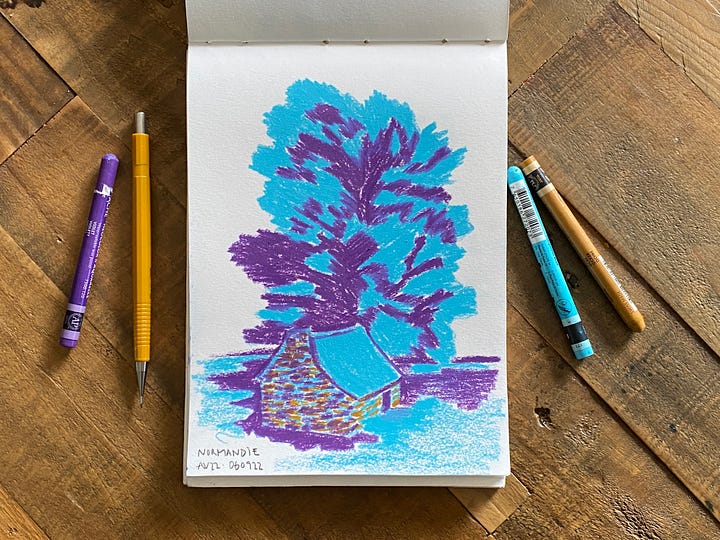
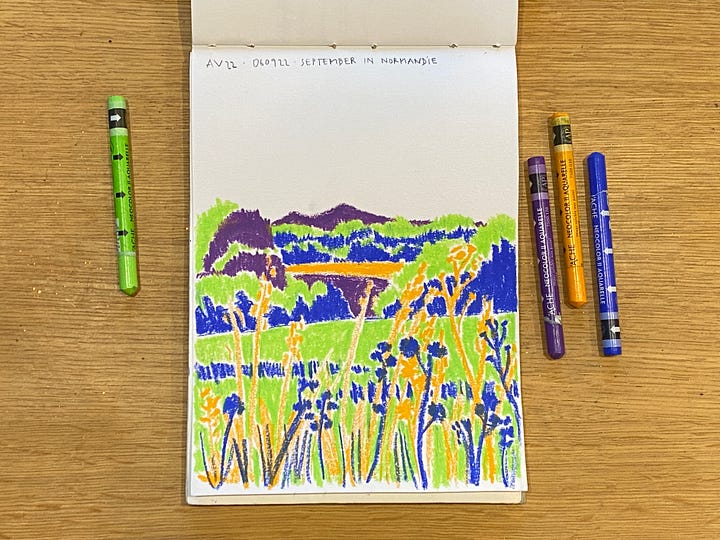
2. ‘A fine line between documentation and art’
The beauty of Hiroshige’s pictures lies in his ability to observe and document ordinary life while elevating the mundane into something poetic, almost magical. As the exhibition catalogue put it: Hiroshige walked a fine line between documentation and art.
What struck me was the atmosphere in his images: the exaggerated waves rising like mountains, the vertical rains, the vivid colours, and extravagant birds. There’s a kind of magical realism in his work. A drawing doesn’t need to replicate reality exactly and objectively, it can reveal a hidden emotional aspect in it.
We shouldn’t shy away from adding our magic, our perspective—ourselves, into our work. That’s what gives it meaning.
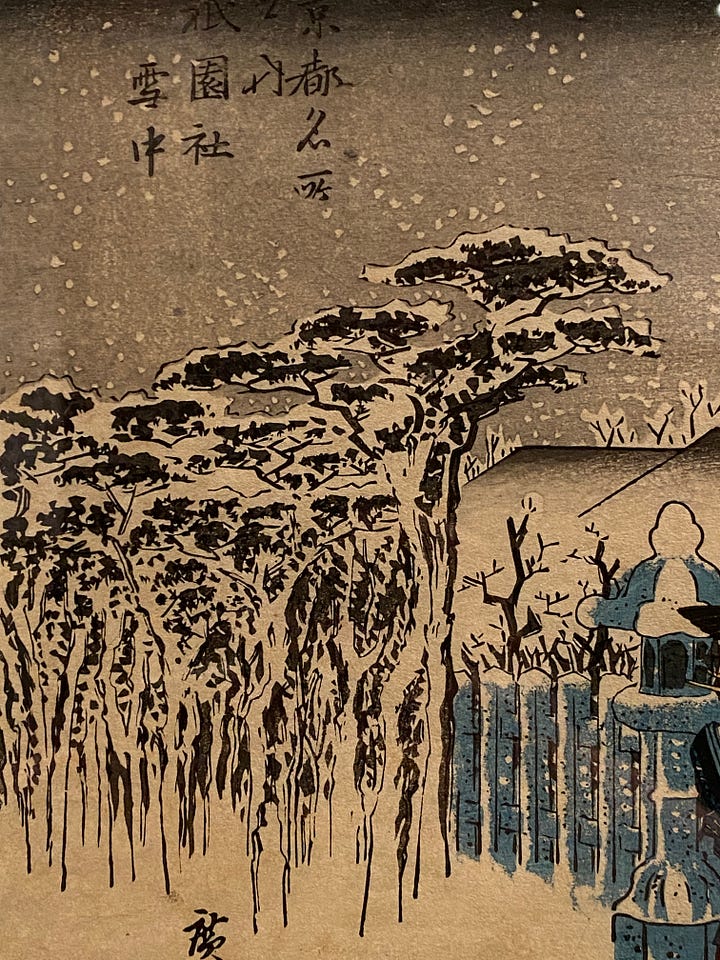
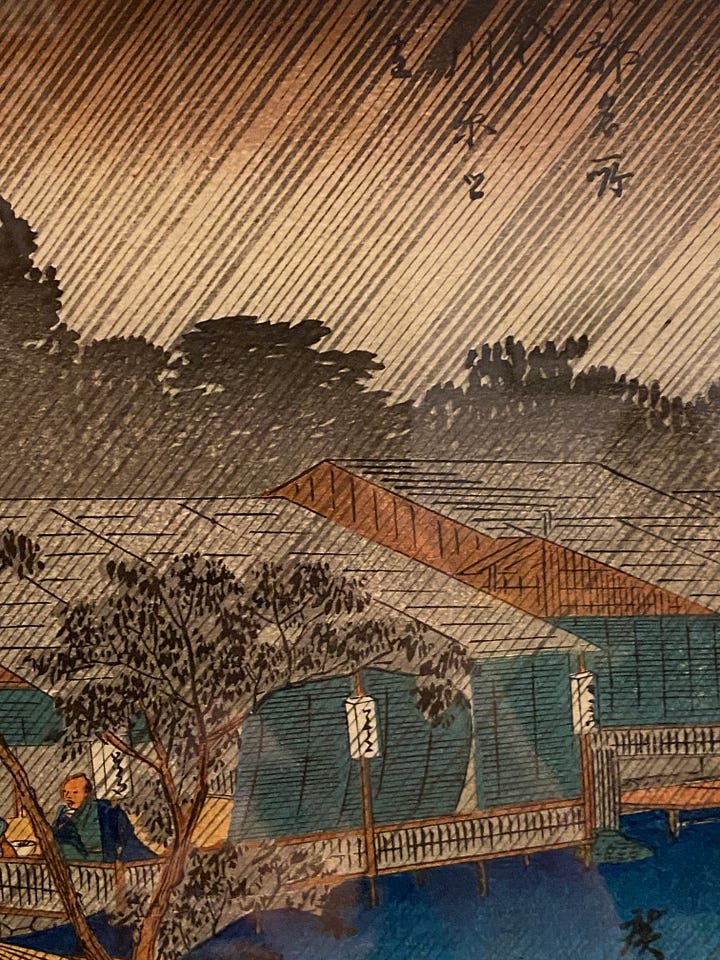
3. Refining your own style
Like all great artists, Hiroshige’s work is instantly recognisable. His style is very distinct.
Style is such a curious thing. Style in art is both a lens through which we see, a way of seeing, (either individual or collective) and a method by which we represent, a way of depicting. It emerges from the use of different tools, specific techniques, and a distinctive visual language, but more importantly, style (in art) reveals our way of being.
In the context of sketching, urban observation, and daily drawing, style is the distinctive way you interpret and translate the world around you onto the page. It’s found in your choice of tools, your line quality, how you simplify or exaggerate details, what you choose to include or leave out of the page, and the way you respond emotionally to a space or moment. It’s less about having a polished aesthetic and more about how you see and how that seeing becomes a drawing. Over time, your style becomes a visual signature: a record not just of places, but of presence.
I love this quote by Fernando Pessoa:
An artist’s style is not a technique, but the result of their way of being.
Techniques can be learn, but style is developed. And the only way to develop it is to practice. Relentlessly. To draw and draw and draw again. Every day. For months. For years.
4. Versions of the same image
Another insight: Hiroshige often created different versions of the same print using alternative colour schemes to evoke various moods. While the lines remained fixed (as they were carved into woodblocks), colour brought new layers of emotion and atmosphere, suggesting the time of day, weather, or tone.
It’s a powerful reminder of how much we can experiment within a series. Revisiting the same subject with different techniques or styles can reveal new perspectives and offer unexpected results.
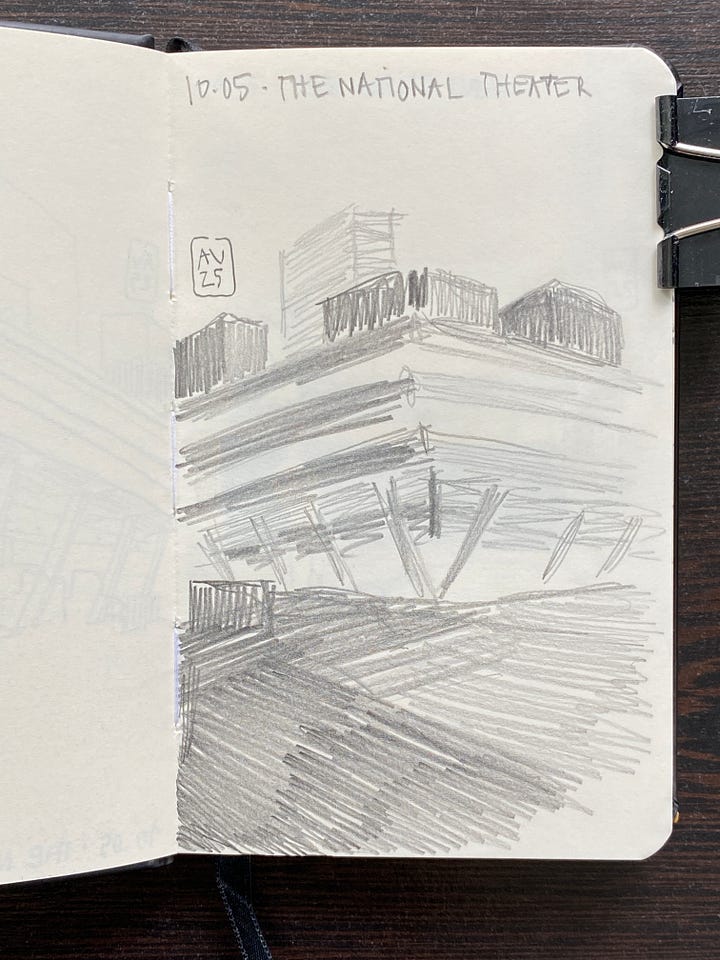
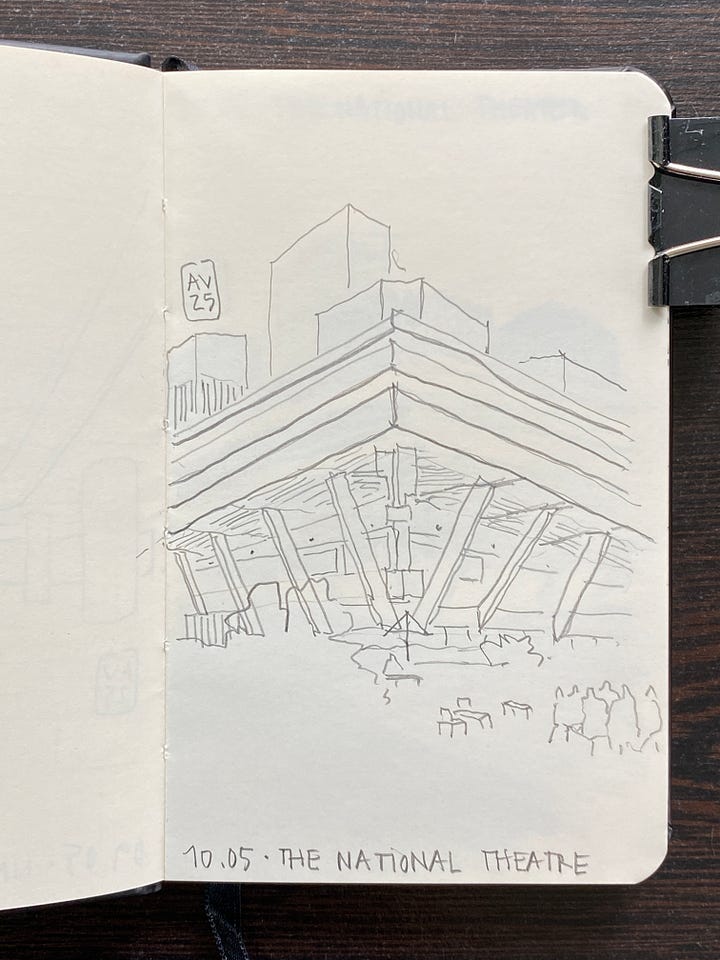
5. Getting inspired
One of my favourite moments in the exhibition came at the end, where the exhibition concluded with a bunch of artworks by modern and contemporary artists inspired by Hiroshige’s work in some form or other. There was a picture by Van Gogh (who bought many of Hiroshige’s prints, redrawing and painting versions of them). But there were also many contemporary artists who continue being inspired by Hiroshige’s art.
This visual conversation through time is a reminder of how powerful it is to study our masters, and how art is born from observation and attention.
Austin Kleon wrote a whole book about this concept: Steal Like an Artist, following this idea that art evolves with inspiration and influence.
I’ll finish with his words—and steal them as a strongly recommended piece of advice:
What a good artist understands is that nothing comes from nowhere. All creative work builds on what came before. Nothing is completely original. (…) Carry a notebook and a pen with you wherever you go. Get used to pulling it out and jotting down your thoughts and observations.
✏️✨
Happy sketching!
Ana





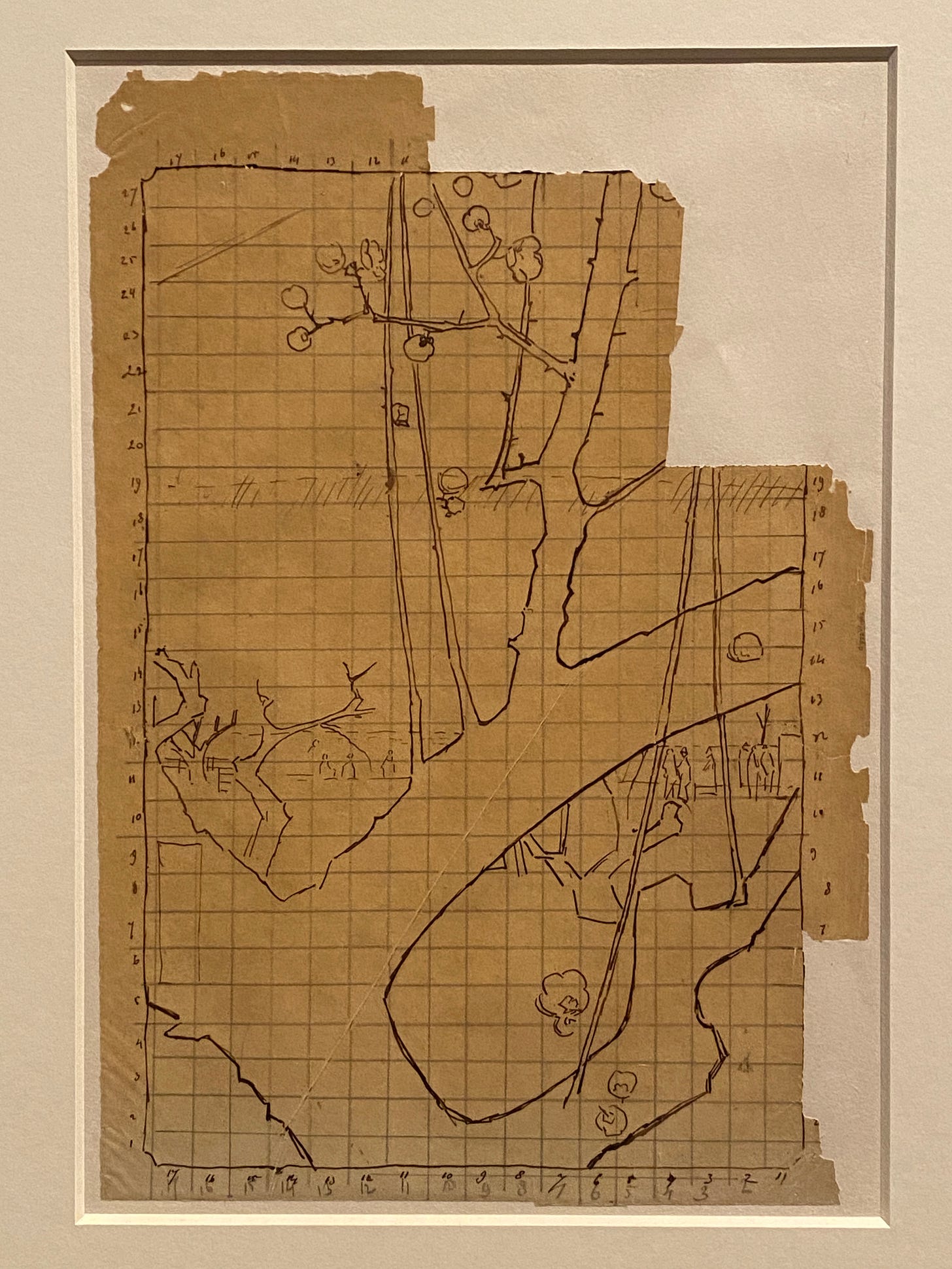
That Austin Klein book is still one of my favourites